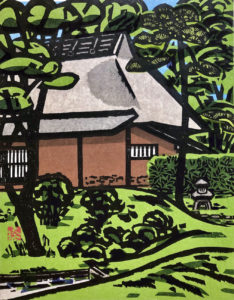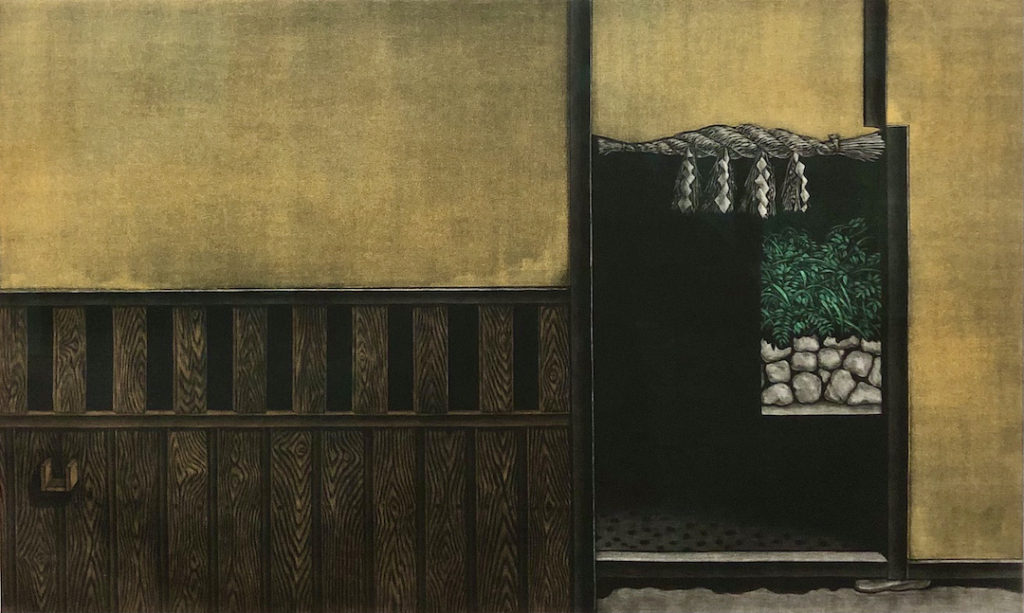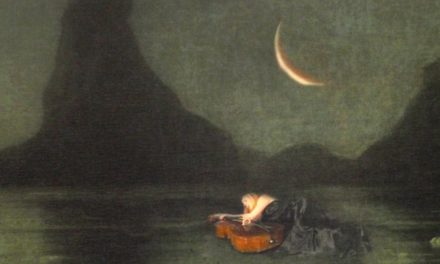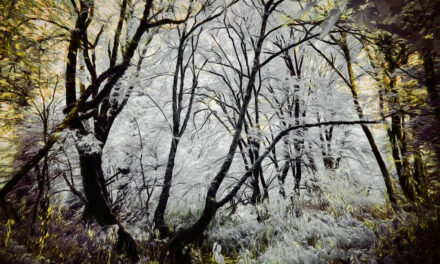(Above: Togano, a print by artist Sekino Jun’ichiro, one of the major postwar figures in the sōsaku-hanga movement in Japan)
By Randi Bjornstad
The exhibit now on the walls at the White Lotus Gallery in downtown Eugene goes a long way toward expanding the notion many people may have about traditional Japanese printmaking and the relationship among artists, their creations, and their marketing.
Beyond Creative: Japanese Prints Since the 1950s puts this transformation on vivid display, with artwork that runs the gamut from the more stylized to pieces that evoke definite influences of impressionism and modernism on the ancient art form.
“It is called the Creative Prints Movement, and it represents the era in which artists began not only creating their designs but retaining control over the printing and marketing of their work,” gallery representative Jennifer Huang said. “In the past, after the artists did their paintings, they were not part of the rest of the process, creating their own carved blocks and doing the printing. Back then, the publishers controlled the process and created the prints and sold them. We may know those artists’ names, but they did not participate in the whole creation of their work.”

Garden Lantern in Shoiken, a print by Hashimoto Okiie
The gradual change began in the early 1900s, when a two-way influence began between the impressionism and modernism of Western art and the exquisite character of traditional Japanese wood-block prints. Through that exposure, the Japanese artists began to realize that they could exercise the same type of autonomy that the Western artists enjoyed over their work, Huang said.
“Why did it take so long? I think that as time went by, more artists from Japan began to travel internationally, and the younger generation began to meet many more Western artists,” she said. “They began to realize that they did not have to follow the traditional model, that they could do the painting, and carving, and printing themselves and keep the rights to their work.”
Part of that learning curve also included being exposed to other ways that artists in the West protected their work, such as numbering sets of prints to create limited editions, she said.
The White Lotus exhibit features prints by some of the best-known artists of the Creative Prints Movement — called sōsaku-hanga in Japanese — including Hashimoto Okiie, Maki Haku, Mori Yoshitoshi, Saito Kiyoshi and Sekino Jun’ichiro, plus well-known contemporary printmakers Hamanishi Katsunori, Hiratsuka Yuji, Noda Tetsuya and Kaneko Kunio.
Beyond Creative: Japanese Prints Since the 1950s
When: Through Nov. 13, 2021
Where: White Lotus Gallery, 767 Willamette St., Eugene
Hours: 10 a.m. to 4 p.m. Tuesday through Saturday
Information: Telephone 541-345-3276; email Lin@wlotus.com; online at wlotus.com

Hamanishi Katsunori’s Window, New Year








